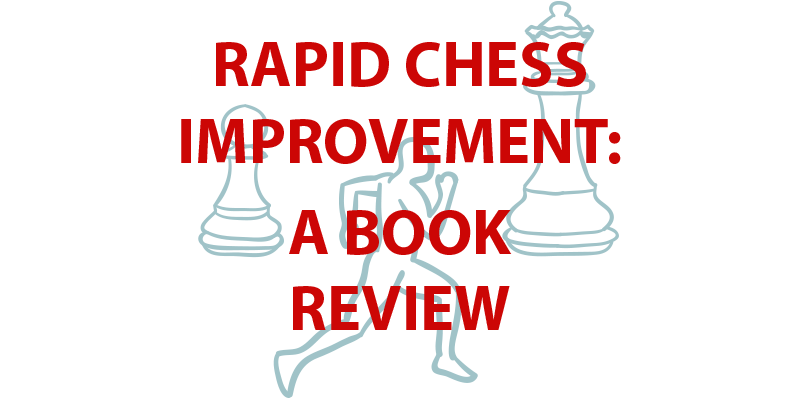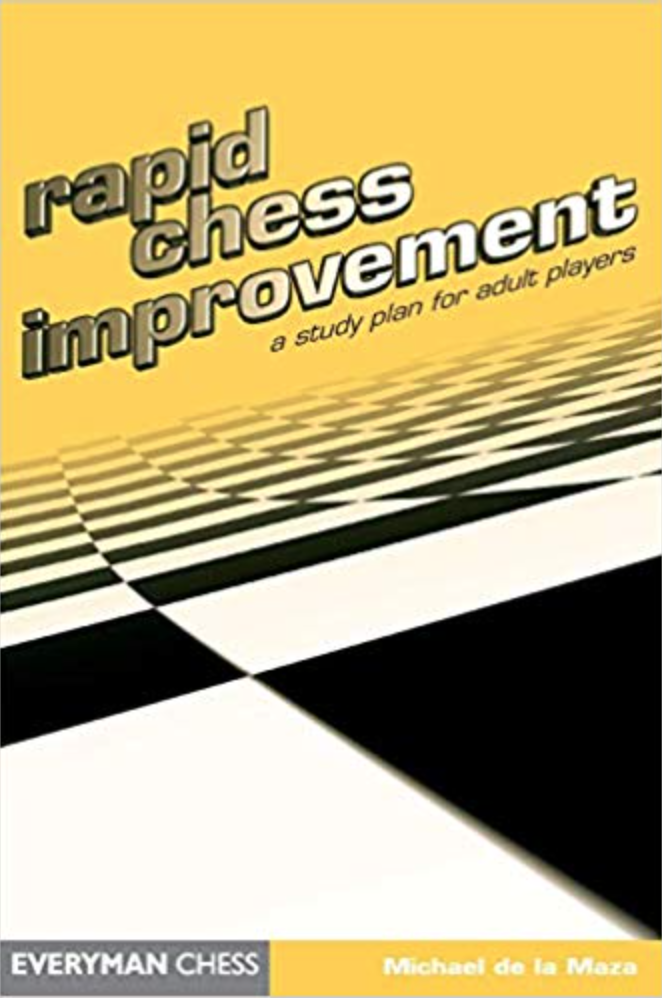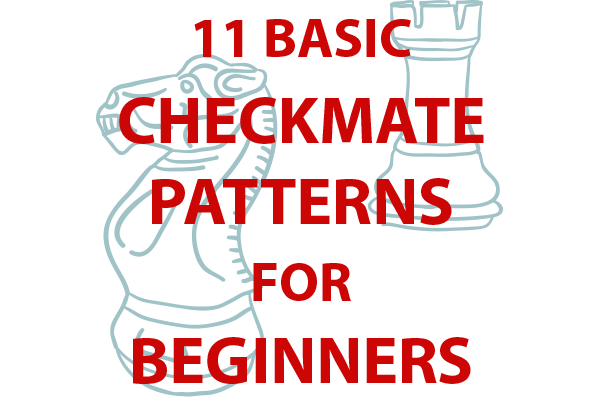


Have you ever wished you could find a training regiment to quickly increase your chess abilities? Well, once upon a time there was a man named Michael de la Maza (MDLM) who went from under 1400 USCF ELO to over 2000 in 3 years and ended his chess career by winning a 10k prize at the 2001 World Open in Philadelphia. His book, “Rapid Chess Improvement: A Study Plan for Adult Players,” documents his training methods.
This book, which is based off the author’s series of internet articles called, 400 Points in 400 Days , promotes the use of Chess Vision Drills and something called Seven Circles as a training regimen for rapid chess improvement. The book offers several micro-level drills designed to increase board vision for beginner to intermediate players. Drills with names like Concentric Squares and Knight Sight and several others are to go through an intensive phase where they are performed twice a day for a week or two. Then, during refresh phases, the drills are repeated once a month and or before competition. Seven Circles is a methodology where one performs seven rounds of study on a comprehensive set of tactics puzzles. In addition, the amount of days to complete each round decreases until the study plan culminates in doing all the puzzles in one marathon day.
Some feel the book’s promotion of a tactics heavy curriculum irresponsibly ignores other areas needed for chess improvement. MDLM, in expressing his frustration with the training methods he was offered before coming up with his own curriculum, was highly critical of established authors and training methods; like opening and endgame studies. In his book, he expresses that in the class levels the most important thing to win games was to not blunder off pieces with bad tactics. As a result, he has received a lot criticism. For some quick middlegame hints read, How to Win at Chess: 4 Tips to Improve Your Middlegame. Ironically, although his prescription is tactics heavy, the book also offers an 8-step pre-move thought process, a 5-step planning technique, an opening learning method and a computer chess game analysis methodology.
The influence of this book should not be underestimated. While the number of puzzles and rounds offered by MDLM are arbitrary and can be debated as too extreme, his method of learning through spaced repetition is undeniable. His results speak for themselves and the fact that several books written afterwards have modified and perhaps improved his chess learning methods is additional proof of its legitimacy. Nowadays, neuroscience’s support of spaced repetition is relatively common knowledge, but when MDLM first offered his methods in the early 2000s nobody was writing about it in chess.

While the book has its skeptics, one has to give MDLM his credit. He had a problem, devised a plan to get the results he desired and accomplished his goal. His articles and book are merely a record of what he did. Does that mean that you are guaranteed to get the exact same results? No, of course not, he is selling. But if one dares to follow his ‘extreme’ training plan, rapid improvement of some sort is highly probable.
 A checkmate pattern is a specific identifiable positioning of pieces...
A checkmate pattern is a specific identifiable positioning of pieces...
 Chess is a game with many approaches to improve. Some...
Chess is a game with many approaches to improve. Some...